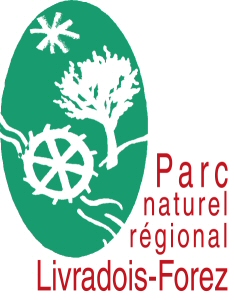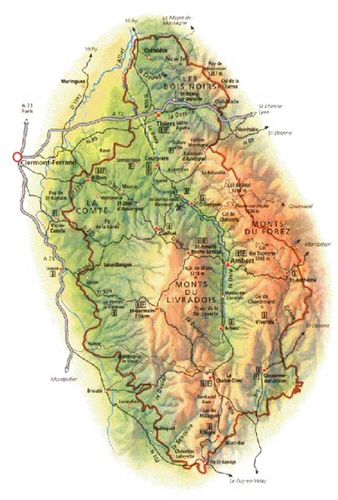The “Parc Naturel Régional Livradois-Forez”
 The “Parc Naturel Régional Livradois-Forez” is named after the Livradois mountain mass and the Forez mountain range. It straddles 2 French departments (the Puy de Dôme and the Haute Loire) over a 321,992 hectare area that 109,030 people share out. It was created 4th February 1986.
The “Parc Naturel Régional Livradois-Forez” is named after the Livradois mountain mass and the Forez mountain range. It straddles 2 French departments (the Puy de Dôme and the Haute Loire) over a 321,992 hectare area that 109,030 people share out. It was created 4th February 1986.
Two-hour drive from Lyon, the Livradois-Forez Park is close to Clermont-Ferrand, Vichy, Le Puy en Velay and Saint-Etienne while including Thiers – the cutlery industry capital city, Ambert – and its famous cheese “Fourme d’Ambert”, and finally La Chaise Dieu – and its abbey church.
These lands have always been covered with fields and forests. Over the centuries, the inhabitants have learned how to make the most of the energy from rivers to develop hand-crafted activities thanks to savoir-faire that have made the region famous, far beyond its geographic borders. These savoir-faire still make the renown of those cities and places worldwide.
Several large remarkable geographical areas are part of the park:
- the river Dore Valley, which is like the park’s “vertebral column” since it crosses the Livradois from Ambert to Thiers
- the Forez mountains and its top plateau, covered with high altitude moor named “Hautes Chaumes”
- the Craponne plateau
- the Livradois’ isolated countrysides
- the Livradois mountains, which includes high forests plateau
- the “Comté’s” hills and hillsides, around the city of Vic le Comte
- the Billom’s region hills and hillsides
Lots of natural and artificial lakes embellish the Park landscapes. New articles about Aubusson-d’Auvergne, Cunlhat, St Anthème and St Rémy sur Durolle will be online soon.
Numerous mayors have decided to enhance the rivers that pass through their commune territories. We can name: Ollièrgues, Ambert, Thiers for the largest towns; but smaller ones also play the game, such as St Flour l’Etang.
A semi annual magazine intitled “Livradois Forez : Journal du Parc Naturel Régional Livradois Forez” has been created to deal with the protection of the environment, social life, traditions and cultural events within the Park.
Back to the Regional Nature Parks page



Laisser un commentaire